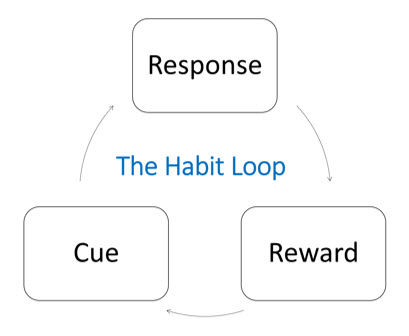By Mark Wright, OD, FCOVD,
and Carole Burns, OD, FCOVD

Nov. 18, 2020
Staying consistently productive is a challenge for most people. Here is what the science says about increasing productivity, and how to apply those findings to the workings of your practice.
Your most valuable resource is time. Once you spend it, it is gone. How you spend your time is, therefore, a topic we should all consider. Our hardest decisions every day are not between what is good and evil, it is between what is a good use of our time and what is the best use of our time.
According to a McKinsey study, we spend an average of 13 hours per week handling e-mail. When used correctly, e-mail can cause improved communication and collaboration which, according to McKinsey, could raise our productivity 20-25 percenti, however, Forbes says the average employee checks their e-mail 36 times an hourii. Is that really necessary? Does that contribute to productivity?
Microsoft conducted a survey of productivity at work. They found that most people are unproductive 17 hours per week at work (out of a 45-hour work week).iii
Since people (including all of us) are struggling to be productive at work, here are five fixes.
Manage Distractions
Dopamine is a reward neurotransmitter. Research shows that every time we receive new information, our brains are flooded with dopamine. The implication of this is that we are wired to love distractions. Every time we log in to social media there is a rush of dopamine because we are addicted to new stories, new facts and new information.iv
So, how do you manage an addiction? First, come to grips with the fact that you are addicted.
Other Articles to Explore
Then, and only then, you can move forward to address the problem. Take the step of limiting your exposure to temptations. Make of list of the things that distract you. Things like shooting the breeze with co-workers, scrolling through Twitter and checking e-mail every time you hear that little “ding” that tells you a new e-mail has arrived.
Follow that up with creating a plan to limit the temptations. Do things like turning off the sound that alerts you that a new e-mail just arrived. Limit the times you check e-mail to once or twice a day at specific times. Do the same thing with Twitter. Talk to co-workers about limiting “shoot-the-breeze” meetings by politely asking them to not disrupt you during your productive times.
Manage Your Body’s Natural Rhythms
Research shows that our brains are most alert 2.5-4 hours after waking up. That’s when the hormones that help us to be most productive are released. These hormones help us to solve problems, generate ideas and work our way through meticulous work.v
Use this knowledge to maximize your productivity. If you have difficulty getting started, change your workflow so that you don’t miss that early morning window of maximum productivity.
Do First Things First (even if it is the hardest)
Psychologist K. Anders Ericsson’s researchvi showed that the most successful musicians don’t practice more often than their peers, they practice more deliberately. The most successful musicians spend their practice time on the parts of their performance that are the most challenging and by doing this they outperform their peers who spend the same time practicing the entire piece.
The lesson to be learned from this is to prioritize your to-do list. Identify what is most important and do that first rather than just trying to check everything off your list. And do the most important thing first – even if it is the hardest.
Take Strategic Breaks
The average American has an attention span of eight seconds (for comparison, a goldfish has an attention span of nine seconds).vii
The U.S. Army Research Institute conducted a study that showed people had better focus and more energy for longer periods of time when they worked for 90 minutes followed by 15-20 minute breaks. The 90-minute number matches your body’s natural rhythms of rest and alertness.
Others suggest you can reach “perfect productivity” by working for 52 minutes, then taking a 17-minute break.
The key is to find your rhythm and stick to it as much as possible.
The break is important, but also important is what you do during the break. Maximize the breaks by doing activities that replenish your body and mind such as going for a walk or eating a healthy snack.
Replace Bad Habits with Better Habits
Charles Duhigg in his book, “The Power of Habit,” makes the point that the best way to stop bad habits is to replace them with good habits. Patterns shape almost every aspect of our lives. It often takes three months to change a pattern. Anyone who has tried to stop smoking or lose weight knows this first hand.
Patterns are helpful. Our brain is constantly looking for ways to reduce effort. By converting a sequence of actions into an automatic routine it allows our brains to ramp down. Think about backing your car out of the driveway. At first, it required almost all of your brain activity. Now, you do it without thinking, which frees up the brain to consider other things.
Duhigg postulates the Habit Loop has the following structure:

It starts with a Cue. If you find yourself checking social media while at work, ask yourself, why? Is it because you are feeling bored? That’s your Cue. Which drives you to the Response (opening social media). Which drives you to the Reward (the dopamine rush).
To change a habit, change the Response to the Cue. Then, drill, drill, drill the new Response without ever going back to the old Response. Emphasize the new Reward. In our case, the new Reward would be increased productivity.
A key point to know is that old habits never go away – they are sitting in the background just waiting for you to go back to the comfortable old Response. So, don’t do that. Instead, replace old bad habits with new better habits by changing your Response to the Cue.
References
i. https://www.mckinsey.com/industries/technology-media-and-telecommunications/our-insights/the-social-economy
ii. https://www.forbes.com/sites/davidburkus/2016/04/06/how-email-made-you-less-productive/?sh=2fc3ac29325d
iii. https://www.huffpost.com/entry/the-science-of-productivity_b_59cca423e4b02ba6621ffa99
iv. http://sitn.hms.harvard.edu/flash/2018/dopamine-smartphones-battle-time/
v. https://www.readersdigest.co.uk/health/health-conditions/how-hormones-affect-your-productivity-and-motivation
vi. https://www.goodlifeproject.com/podcast/anders-ericsson/
vii. https://www.inc.com/neil-patel/when-how-and-how-often-to-take-a-break.html




























